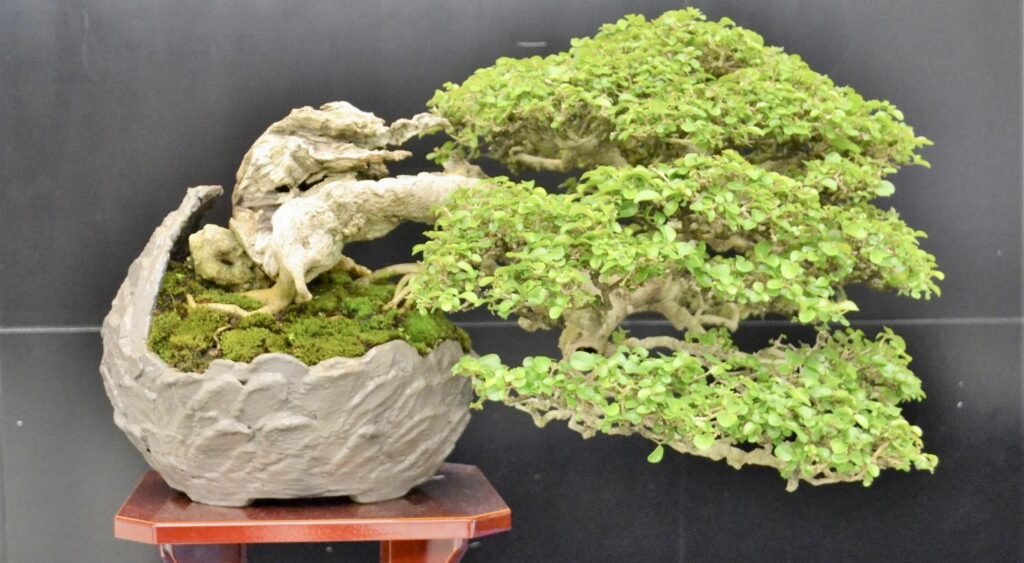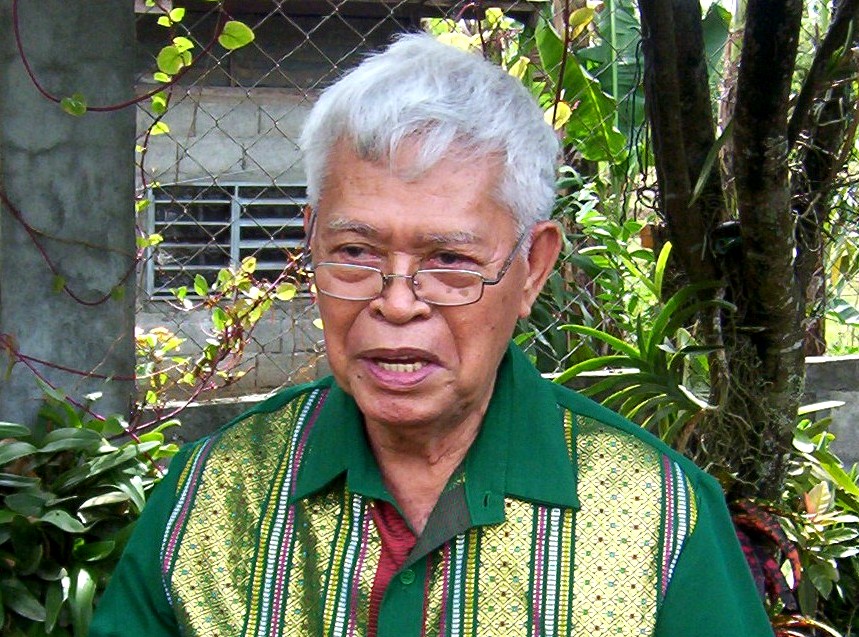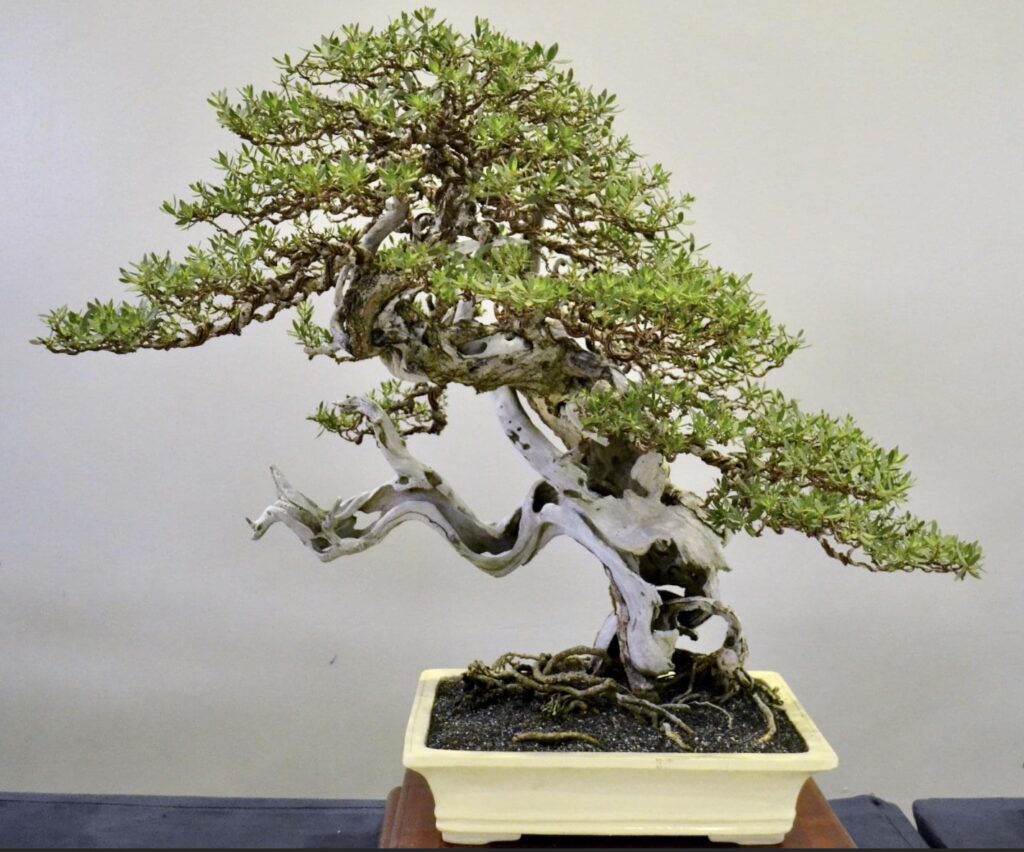Most people who have watched the original The Karate Kid (1984) may think bonsai is a Japanese phenomenon as it featured Pat Morita (who earned an Oscar nomination for Best Supporting Actor) using bonsai in teaching Daniel (Ralph Macchio) the art of meditation.
“Think only tree,” Miyagi (Morita’s character) told Daniel. “Make a perfect down to last pine needle. Wipe your mind clean everything but tree. Nothing exists whole world.”
Unknowingly, bonsai (pronounced bone-sigh, with an accent at the end) is actually Chinese in origin, according to the late Serapion S. Metilla, touted to be the “father of bonsai in the Philippines.” He hailed from Bansalan, Davao del Sur (where this author was also born).
“It is highly likely that the Chinese were the first civilization to plant plants in pots because their paintings and scrolls, which date back before the 12th century, reveal images of plants in pots,” said Metilla in one of our interviews when he was still alive.
Wikipedia backed up his claim. “The Japanese art of bonsai originated from the Chinese practice of penjing,” the free encyclopedia stated. Penjing, also known as penzai, utilizes traditional techniques to produce entire natural sceneries in small pots that mimic the grandiose and shape of real-life sceneries.
Similar versions of the art exist in other Asian cultures, including the miniature living landscapes of Vietnamese Hon non bo. It was during the Tang dynasty, when penjing was its height, that the art was first introduced into Japan.
“From the 6th century onward, Imperial embassy personnel and Buddhist students from Japan visited and returned from mainland China,” Wikipedia reported. “They brought back many Chinese ideas and goods, including container plantings. Over time, these container plantings began to appear in Japanese writings and representative art.”

Award-winning bonsai
That’s the reason why bonsai is now associated with Japanese art. Although the word “bonsai” comes from two Japanese words – bon, which means “pot” or “tray,” and sai, which means “to plant” – it is actually a Japanese pronunciation of the original Chinese term penzai.
Originally, the Japanese bonsai only attempted to produce small trees that mimic the shape of real-life trees. Today, it has become an umbrella term in English, attached to many forms of potted or other plants, and also on occasion to other living and non-living things.
In The New York Times, journalist Stephen Orr observed: “The term (bonsai) should be reserved for plants that are grown in shallow containers following the precise tenets of bonsai pruning and training, resulting in an artful miniature replica of a full-grown tree in nature.”
In the most restrictive sense, “bonsai” refers to miniaturized, container-grown trees adhering to Japanese tradition and principles. But there’s an interesting story on how it became popular and even now equated with the noble.
Robert Perry, writing for the Science Notebook, wrote: “Someone became intrigued by the tiny gnarled trees he found growing in rock crevices high up in the mountains of Japan. The small trees eventually were cultivated in the emperor’s yard.”
As an art, bonsai is more than a thousand years old. As a hobby, it is very much rewarding. As The Hobby Nerd wrote in his blog: “(Bonsai) is an art and hobby that is very much unlike most others. It takes time and patience, but it can be very rewarding as a hobby or pursuit.
“All you need is a few basic materials and some basic tools,” he added. “You don’t even have to buy an ‘official bonsai tree’ because there really is no such thing! Bonsai isn’t a particular type of tree. It is the art of taking any type of tree or shrub and growing it and trimming it in ways so that it remains small yet has the proportions and uncanny look of its larger counterparts.”
Jose Mari Lacandula, a horticultural expert who used to write a weekly column for a national daily, puts it: “Bonsai pieces are living artworks which are heirlooms in themselves.”
Many kinds of trees are suitable for bonsai culture. The most common ones, according to Metilla, are mulberry trees, prodocarpus, “kamuning,” “mulawing-aso,” “kalyos” (known scientifically as Streblus asper), “balite” family (Ficus species), candle tree (Parmentiera cereifera), “bignay” (Antedisma spp.), pines and junipers, cydas, boxwood, narra, and China holly (Malpighia coccigera).
The following fruit trees are also good for bonsai culture: rambutan, caimito, camachile, sampaloc, atis, and duhat.
Among shrubs, bushes, and herbs, the following yield the best bonsai results: dwarf bamboo, “tsaang bukid” or Fukien tea, variegated gumamela, bougainvillea, sampaguita, rosal, azalea, santan, lantana, oregano, and chrysanthemum.
Propagation of bonsai material may be done by seeds, cuttings, air-layering or marcotting, grafting/budding, and separation of runners or suckers. Seed propagation is the most common method used. “By seeds, it will take a longer time,” Metilla said.
Metilla, however, preferred cuttings, which come in four ways: stem cutting, heel cutting, leaf-cutting, and rooting cutting. “For the propagation of materials for bonsai, the stem, heel and root cuttings are recommended,” he said.

Serapion Metilla 
Beautiful bonsai
“Look for cuttings which are not too old or too young, ranging in size like a coconut midrib to thumb-size, depending on the kind of plants,” Metilla said. “The base must be clean-cut slant-wise.”
According to Metilla, the use of cuttings has several advantages over other methods. For one, they look older than those grown from seeds, and for another, they come out true-to-type or form. The disadvantages: their rooting system might not be well-developed, and that the tapering form will not be as nice as the specimen from seeds.
As for pots, choose those with good drainage (hole at the bottom). “Training pots can be plastic bag planters, ice cream canisters, old plastic pails and basins, plastic jars, soft drinks and mineral water bottles (cut in half), and bonsai pots,” says Nolan Sison, an active member of the Bonsai Hobbyists of the Philippines.
For soil medium, Sison recommends river sand, particularly the coarse type. “Coarse sand leaves air packets,” he says. “It is important to have air pockets inside the pot for robust root production, because developing roots thrive on nitrates which are formed from the air’s nitrogen and the soil’s carbon and nitrites. Coarse sand also has good drainage and prevents water clogging in your pot.”
Metilla, however, suggested a mixture of one part garden soil, one part river sand, and one part compost.
Aside from pots or trays, aluminum or copper wires are the important material in bonsai culture. “You can’t use ordinary GI wires,” says Sison. “The tension and resistance of GI wires are too much for bending and spiral wrap of branches. Branch breakage will surely occur.”
According to Lacandula, maintenance is the most difficult aspect of bonsai culture. After all, the care of bonsai requires daily grooming attention. It needs a sufficient amount of sunlight, air and water, and a proper temperature. Bonsai plants reportedly are subject to many of the same pests and diseases as other plants. Their small size also makes them fragile.
While the plant is growing, the branches must be trimmed once every two weeks or a month, depending on the progress of their growth. “Study carefully the general form,” Metilla suggested. “Have the branches well-spaced through proper trimming, resulting in a tapering effect with a pronounced apex.”
Bonsai are classified according to size. The large ones measure twenty-five-and-a-half to thirty-six-and-a-half inches. Midway are the regulars, eight-and-a-half to twenty-five inches. The miniature or midget types called mame (pronounced Mah-may) measure two to no more than eight inches high.
“Bonsai are living works of art, some famous trees are hundreds of years old,” states the website, bonsaiempire.com. “These trees are priceless and when for sale, very expensive. Prices, however, tend to vary widely from shop to shop and from country to country.”
In the Philippines, the price of bonsai ranges from P1,000 to P50,000 – depending upon the planting material and form. The older the bonsai is, the higher the price is.
So far, the most expensive bonsai tree is the centuries-old Pine, sold for 1.3 million dollars at the International Bonsai Convention in Takamatsu, Japan.
Although the art of bonsai is of recent introduction in the Philippines, history records show that it was already practiced in the country in the late 15th century. A book, Relacion de las Islas Filipinas, written by a Spaniard in 1590, chronicled: “The Chinese in Manila were fond of planting red balete trees in the holes and crevices of coral stones and laced these in basins with a little water. When the plants have established their roots, these were placed
on their altars.”
Metilla agreed. “I think the Philippines is the first country in Southeast Asia to grow bonsai,” he said. “Bonsai was introduced here by the Chinese centuries ago, only we did not develop it until the 1960s.”

